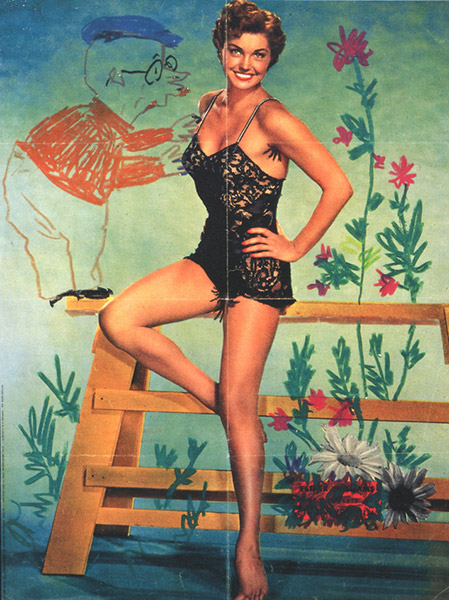In 2018, The Museu Picasso in Barcelona published the letters that the artist had written to Jaime Sabartés, donated by the artist on condition that they not be made public until 50 years later. The exhibition Sabartés by Picasso by Sabartés allowed viewers to revisit a “companionship” that began at the end of the 19th century and led to a memoir, Picasso. Retratos y recuerdos (first published in French in 1946, then in Spanish in 1953 and 2018). We know little about this man who became the artist’s personal secretary in 1935. “I met him in 1899, in Barcelona. […] From that first visit to Pablo Ruiz’s studio, I have the admiring recollection of the artist who, from his earliest years, produced an abundant body of work,” wrote the young sculpture student.
They met again in Paris in 1901, when Picasso painted Le Bock (Portrait of Jaime Sabartés), currently at the Pushkin Museum in Moscow. Sabartés then left Europe and spent many years living in Guatemala (1904-1926) and working in his uncle’s company, before moving to Uruguay, where he stayed from 1928 to 1932. The two friends corresponded and Sabartés wrote a book about Picasso (Picasso en su obra). He returned to Europe in 1932, first to Paris and then to Madrid; finally, in November 1935, he became the artist’s secretary. “This time, at Picasso’s request, intending to live at his apartment on Rue La Boétie.” “From that day on, my life has remained in the wake of his, without my wondering how long this illusion will last, as we intended it to be forever.”
If Picasso approached Sabartés, it was because in the summer of 1935 he was in the midst of a serious marital crisis with Olga, just a few weeks before Marie-Thérèse Walter gave birth to their daughter Maya. He needed both emotional and logistical support. Their time living together was not without difficulties, and Sabartés moved out in January 1937. However, he resumed his service in November 1938, this time at 7 Rue des Grands-Augustins. He continued to publish several articles about his friend’s work, particularly an account of the “blue period” (in 1955), considered crucial by the many critics who wrote about this short stage. Sabartés made attempts to write fiction, without great success, with two novels published respectively in 1947 (Don Julián) and 1949 (Son Excellence, translated from Spanish to French by Geneviève Laporte, in the midst of a short but passionate relationship with Picasso at the time). The pieces that the artist gave to Sabartés were primarily prints, although an exhibition held in 1958 revealed a series of collages from 1957-58 in which Picasso amused himself by placing a caricature of his friend alongside pictures of pin-up girls.
A large part of the holdings at the Museu Picasso in Barcelona are from the Sabartés donation (427 works in 1963), and from Picasso, who after his friend’s death continued to give the museum a copy of each one of his prints, the “prueba Sabartés” (the Sabartés proof), a moving tribute to their friendship.





 Summary
Summary